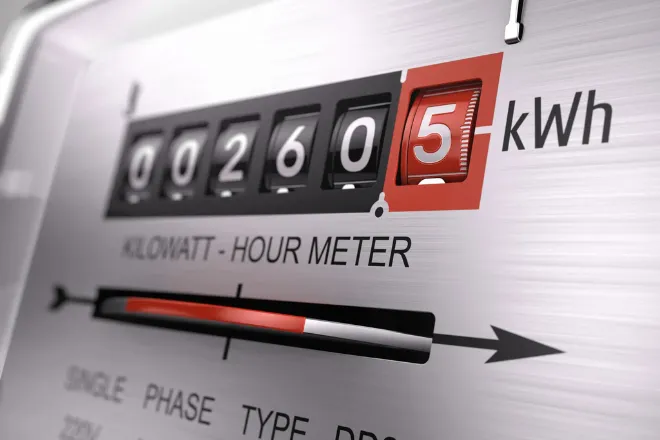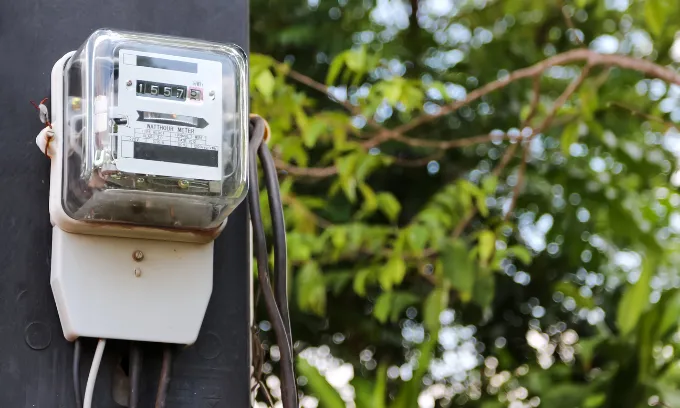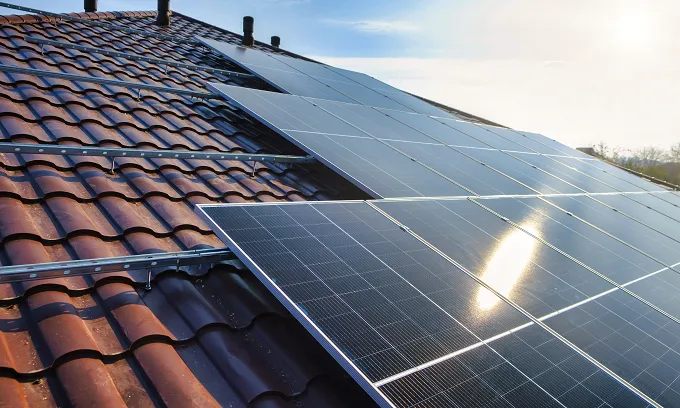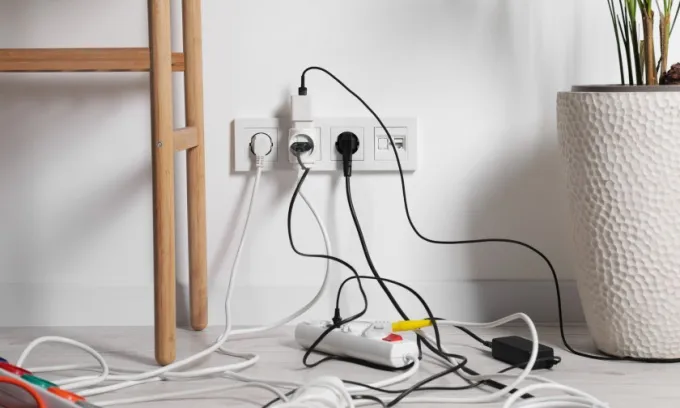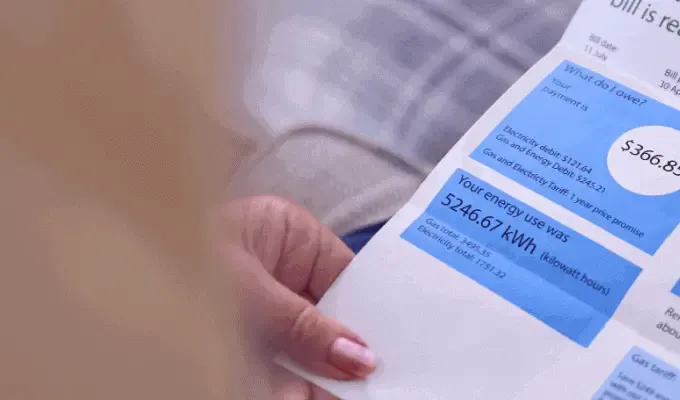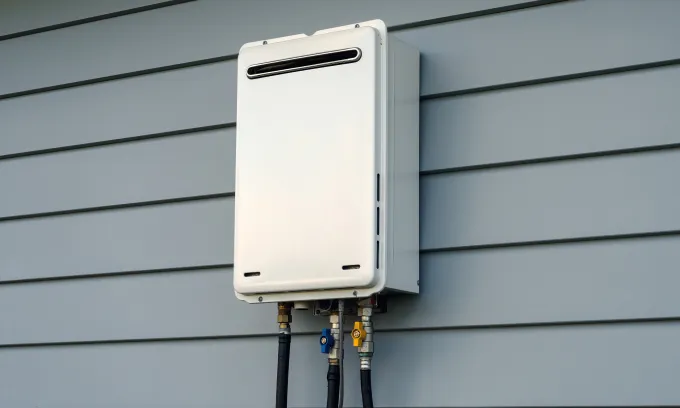What are business energy plans?
Business energy plans refer to specialised electricity and/or gas plans for small to medium businesses. They are currently offered by:
- Energy providers who sell business plans exclusively (e.g. Blue NRG and Next Business Energy).
- Some residential electricity or gas providers.
Typically, these plans are specifically tailored to small to medium businesses. A small business typically employs fewer than 20 people, while a medium business can have anywhere from 20 to 199 employees.
However, some energy providers may instead classify a business’s size based on its yearly energy consumption.
How are business energy plans different from residential energy plans?
Rates between business and residential energy plans are quite different, as small to medium businesses typically use much more electricity and/or gas than the average home.
However, business electricity and gas plans are generally structured the same as residential energy plans.
Switching to a business energy plan
Can I switch to a business energy plan?
Whether you can switch to a business electricity and/or gas plan will depend on the state your small or medium business operates in and whether it is regulated or deregulated.
In a deregulated energy market, full retail competition permits businesses to enter the market and offer their own competitive plans and rates. That means businesses can pick the plan that best suits their needs and wants.
The following states and regions are deregulated:
- New South Wales (NSW)
- Australian Capital Territory (ACT)
- Victoria (VIC)
- South Australia (SA)
- South East Queensland (QLD).
If you live in any of these states, our comparison journey can help you switch business electricity and/or gas plans in minutes.
Alternatively, if you live in a regulated energy market, energy pricing and competition are restricted to protect customers from being overcharged. That means businesses will not have the freedom to choose their own plan or provider.
The following states and regions are regulated for electricity and gas:
- Western Australia (WA)
- Regional QLD
- Northern Territory (NT)*.
However, be mindful of these fees on your current plan before moving from one plan to the next — you don’t want to be left with unexpected bill shock:
- Move-in/new connection and disconnection fees
- Early exit fees (on contracts).
*Natural gas isn’t typically offered in NT because of a lack of accessibility to a gas mains.
What happens when I switch to a business energy plan?
If you’re switching between business plans from the same provider, you’ll be charged based on your new electricity rates in the next bill cycle.
However, if you’re switching energy providers, you’ll have to pay off your old provider’s final bill, calculated from your total electricity use up to that point. You’ll only start paying for future bills with your new provider once your energy account has been switched over.
In either case, you won’t face a power disruption and the switchover from one plan to the next could take two to three working days. If you’re moving onto a plan that requires a smart meter installation, the switchover could even take weeks.
Can I switch to a renewable business energy plan?
There’s no such thing as a business energy plan that’s 100% powered by clean, renewable energy. However, that doesn’t mean eco-conscious small to medium businesses don’t have any renewable choices.
GreenPower is a government program enabling energy retailers to purchase renewable energy from accredited sources to offset all or part of their power consumption.
Customers can select a contribution tier, ranging from 10% to 100% of their electricity use, which is added as a cost to their plan.
For instance, increasing a 22c/kWh rate by the 50% GreenPower option might result in a 30c/kWh rate, ensuring 50% of that power usage is sourced from renewables.
However, this option is limited to the providers that offer it in each state. If you’d like to learn more about GreenPower, you can visit GreenPower’s official website.
Business electricity plans explained
Business electricity plans
Business electricity plans, like residential electricity plans, charge you for each kilowatt hour (kWh) of electricity you use every bill cycle. Each plan showcases an estimated annual price based on annual usage estimates in each state and its distributor networks.
If you’re short on time, these price estimates are a convenient way to compare one business electricity plan to the next.
There are two types of business electricity plans — market offers and standing offers.
Business market offers
Business market offers are plans designed by providers with attractive features such as lower electricity rates and discounts. However, discounts and rates are only valid during a plan’s contract length or benefit period.
Most market offers feature ‘variable rates’, meaning their rates can be changed at any time (provided your retailer notifies you two to three business days in advance).
As a rule of thumb, business market offers are the most cost-efficient type of plan.
Fixed-rate plans freeze their rates for their entire contract length (e.g. 12 or 24 months), but they are fairly uncommon and their rates are typically higher.
Business standing offers
A business standing offer follows the reference price in each state and distributor network. The government bodies below are responsible for regulating the reference prices in these states:
- NSW, QLD, SA: Australian Energy Regulator (AER)
- VIC: Essential Services Commission (ESC)
- ACT: Independent Competition and Regulatory Commission (ICRC).
A standing offer doesn’t have any discounts or sign-up bonuses — it is also typically the maximum price a provider is willing to bill small to medium businesses.
Providers will, by default, move you onto a business standing offer if:
- Your previous plan has expired.
- You haven’t shopped around for electricity plans for a long time.
Remaining on a business standing offer is not recommended because market offers are always more competitive, comparatively offering hundreds of dollars in savings yearly.
Business electricity costs
Like residential plans, business electricity costs are broken down into two main charges:
- Supply charges: A daily fixed cost you pay (in c/day) to remain connected to the power grid, irrespective of how much or little electricity you use.
- Usage charges: A cost in cents per kilowatt hour (c/kWh) for every kWh of electricity consumed.
If you don’t use much electricity, a plan with lower supply charges may be cheaper. Alternatively, if you use a lot of electricity, a plan with lower usage charges may be cheaper.
How much electricity you use will determine which charge you should focus on.
Business electricity discounts
On market offers, residential and business electricity and/or gas providers alike may offer the following discounts:
- Conditional discounts: A discount if specific criteria are satisfied. Conditional discounts may already be calculated into a plan’s advertised price.
- Dual fuel discount: A discount when you bundle an electricity and gas plan from the same single provider.
- Guaranteed discounts: A discount with no conditions that’s typically expressed as a percentage off a plan’s advertised price.
- Reward programs: Some providers may offer you a free membership to their (or partnered) rewards program, giving you a point for every dollar spent on your energy bills. These points can then be exchanged for rewards (e.g. movie tickets) on a provider’s online portal.
The allure of these discounts is undeniable, but be wary that:
- They typically have a fixed benefit period or contract duration, meaning they will eventually expire.
- You will forfeit a conditional discount if you fail to meet its criteria.
- Instead of a dual-fuel discount, you could potentially save more by having an electricity and gas plan from two separate providers. We recommend calculating if having separate plans saves you more than the dual fuel discount.
- Providers may increase a plan’s electricity rates to compensate for their discounts. Make sure you’re looking at these discounts in relation to their listed rates.
All this information is listed on a plan’s fact sheet. Our energy comparison platform provides access to each plan’s fact sheet — all you have to do is click on the ‘Basic Plan Information’ prompt situated below each plan on the results page.
Business electricity tariffs
Business electricity prices are also determined by the tariff type, which determines how you're charged for your electricity use. Common business tariffs include:
Tariff name | Description | Do you need a smart meter installed?* | Tips to save money |
Single rate | Electricity is charged at a flat rate, no matter the time of day or season. These charges are often referred to as a ‘peak’, ‘anytime’ or ‘general usage’ rate on your power bill. | No. | A single rate tariff can be cost-effective if you use the most electricity during peak demand times. |
Time of use (ToU) | A time of use (ToU) tariff charges different rates for power depending on the time of day. These charges are generally broken into three sections: peak, off-peak and shoulder.
| Yes, or a separate CL meter installed instead. If you don’t have either, please contact your region’s distributor for one. | Businesses on a ToU tariff can save the most money by restricting their electricity usage to shoulder and off-peak periods, when electricity is cheapest. |
Controlled load (CL) | A plan with a controlled load (CL) tariff that includes a separate charge for power used by high-usage appliances, such as hot water systems. Typically, this tariff only applies for limited hours in the day and will only measure usage from the nominated appliance. | Yes. | A CL tariff will charge you less than your plan’s current rates to run an energy-intensive appliance, provided you’re happy to limit its hours of operation. |
Demand | Demand tariffs include three parts: a supply charge, a usage charge, and a demand charge. The demand charge is based on your home's highest electricity usage during peak times. | Yes. | A demand tariff can help reduce your power bills if you:
|
*As part of a nationwide push, smart meters are mandatory across Australia by 2030. If your business still uses a legacy meter, you can speed up a smart meter installation by reaching out to your provider — however, this may incur a charge.
Business gas plans explained
Note: To be eligible for a business gas plan, your business must have a gas connection, which can be organised through your preferred provider for a fee. A gas connection can only be established if your business is located close to a gas main. If not, liquefied petroleum gas (LPG) may be the only alternative.
Business gas plans will track and bill you for every megajoule (MJ) of gas consumed. Like electricity, each plan advertises a price estimate derived from a general yearly gas usage.
Estimated prices are a convenient way to shop around for gas plans if you’re time-poor.
As with business electricity plans, there are two types of business gas plans — market contracts and standing contracts.
Business market contracts
A business market contract, like an electricity market offer, has rates set by providers, often accompanied by discounts.
These rates are typically variable, meaning they can be altered at any time during the contract’s duration (e.g. 12 or 24 months). However, retailers are obligated to provide you with ample notice before doing so.
Fixed-rate plans lock in their advertised rates until they expire, but they are quite rare and may equate to higher rates.
Business market contracts will reap the most savings if cutting costs is the utmost priority.
Business standing contracts
Business standing contracts feature regulated gas prices, limiting the maximum price businesses pay for gas.
Different government institutions are in charge of regulating standing contract prices, depending on where your business resides:
- NSW, VIC, QLD, SA, WA: Respective state governments.
- ACT, TAS: AER.
Business standing contracts are indefinite and feature no additional discounts or sign-up incentives. They also represent the maximum price a provider is willing to charge for their gas offerings.
If the market contract you were previously on expired or if you haven’t compared gas plans in a long while, your provider has likely moved you onto their standing offer.
Typically, market contracts are almost always cheaper than a standing contract. If you’re currently on one, we strongly encourage switching to a business market contract.
Business gas charges
- Gas usage charges: The rate you pay for every MJ of gas your business uses (in c/MJ).
- Gas supply charges: Daily cost to remain connected to the mains gas network. Supply charges are generally measured in cents per day (e.g. 70 cents per day) or as a total sum amount for your billing period (e.g. 90 days). You will be billed for supply charges regardless of how much gas you use.
If you’re not a gas-intensive business, you’ll save more by looking for a plan with lower gas usage charges.
But if your business is heavily reliant on gas, focus on lower gas supply charges instead to slash your gas bills.
Business gas discounts
The discounts offered on gas market contracts are virtually identical to those offered on business electricity market offers.
Business gas tariffs
Generally, usage rates are structured in two different ways — fixed usage rates and block usage rates.
Tariff name | Description | Tips to save money |
Single rate tariff | A flat rate for gas usage throughout the day. | A single rate tariff will save you more if your business doesn’t use a high volume of gas. |
Block rate tariff | Gas usage rates change depending on the quantity of gas used, where rates drop for every ‘block’ of gas used. For example, businesses could be charged 4c/MJ for the first 20 MJ used, 2.7c for the next 20 MJ of usage, and 2.5c/MJ for the rest. | A block rate tariff will save you more if your business’s gas use frequently exceeds the first few blocks of gas daily. |
Business solar feed-in tariffs explained
Some business electricity plans could pay you with a bill credit for your excess solar energy through a feed-in tariff (FiT).
A solar feed in tariff (FiT) pays you a bill credit (in c/kWh) for excess solar exported from your rooftop solar to the grid (e.g. 2c for every kWh of solar exported to the grid).
Solar FiTs are a feature of either standing offers or market offers, depending on your choice or plan or provider.
A solar feed-in tariff could be a fruitful way to defray some of your electricity expenses, especially if you already have a rooftop solar plan installed. However, there are some things to keep in mind:
- A high solar FiT could be hiding inflated electricity usage and supply rates. In the worst-case scenario, you may end up spending more than you’re saving with a FiT.
- Some solar FiTs offer higher rates for a limited amount of exported solar, before dropping down to a lower rate (e.g., 12c/kWh for the first 10kWh per day, 3c/kWh after).
- If you plan to install rooftop solar to start earning with a FiT, assess its payback period, which is the time for FiT credits to offset installation and purchase costs.
- Virtually all usage rates on all electricity plans are worth more than any FiT in the market. That means the self-consumption of your own solar energy will save you more money over any FiT.
If you’d like to learn more about solar, visit our page dedicated to comparing solar plans.
Energy-saving tips for small to medium businesses
Business energy plans relate to the cost per unit of electricity or gas consumed.
However, there are productive ways to lower how much electricity or gas your business uses.
By switching to a cheaper business energy plan and managing your business’s energy use, you’re primed to save hundreds, if not thousands of dollars yearly.
For small to medium businesses, these savings can be reinvested into growing your business productively.
Here are some common energy-wasters and how to manage their energy consumption:
Air conditioning and heating
- Purchase an energy-efficient model of an air-conditioner or heater by referring to its Energy Star ratings, which can be found as a label on the side or back of the unit.
- In summer, set your office’s air-conditioner to 22-24 ℃. For winter, set your office’s heating to 19-21℃ for heating. These temperatures balance comfort and energy efficiency.
- Consider using pedestal or tower fans to help circulate cool air instead of lowering the temperature setting on your air-conditioner, which can increase its electricity draw by up to 5 - 10%.
- Frequently clean and maintain your air-conditioners and heaters. Dust buildup can hinder their overall energy efficiency.
- Make sure windows and doors to unused areas are shut to minimise the loss of heated or cooled air.
- Most heaters and air-conditioners come with built-in timers. Limit their hours of operation to times when the office is most crowded.
For more information, visit our guide to energy-efficient heating and cooling.
Hot water systems
- Hot water systems can either be powered by gas or electricity. Gas heaters are often cheaper to run, but cost more to purchase and install. Consider a gas-powered hot water system for long-term savings.
- If you already have a rooftop solar system installed, consider installing a solar-powered hot water system. That way, you can slash your power bills by relying less on grid electricity or gas.
- Regardless of hot water system type, consider installing an energy-efficient model by referring to its Energy Star rating label, typically situated at the front or back of the unit.
- Avoid using hot water in the kitchen or bathroom.
For more information on the different types of hot water systems, visit our guide to the best hot water systems.
Lighting
- Replace halogen or incandescent light bulbs with energy-efficient LED lights.
- Turn off lights in meeting rooms or spaces that aren’t in use.
- Consider installing an electrical timer, setting specific times of operation.
Computers, laptops and printers
- Purchase energy-efficient computers and monitors that use less electricity to charge or operate. They are typically labelled with an Energy Star Rating.
- Turn off desktops, monitors and printers when they aren’t in use.
Refrigerators/Fridges
- A fridge that is too large can waste unnecessary energy, while choosing one that is too small could require purchasing and powering at least one more fridge. Appropriately size your office’s fridge to meet your workplace’s needs.
- Buy an energy-efficient model by referring to its Energy Star Rating, which can typically be found on the side or on its front door.
- Do not open the fridge door for too long to prevent cold air from escaping. Replenishing lost cold air will consume more electricity.
- Design preferences aside, top or bottom-mounted fridges generally consume less energy than a French door model. However, that isn’t always the case. It’s important to do your research before committing.
Monitoring your business energy use
You can also choose to map out how your business uses gas or electricity for your business’s day-to-day operations:
- Monitoring tools and software (electricity and solar only). Electricity usage monitors, smart meters, digital meters or energy monitoring software can help you monitor the appliances or hours where electricity is consumed the most in real-time and your solar system’s total output in kWh.
- Refer to your gas or electricity bill: The ‘Energy usage summary’ section on your power bill tells you how much your electricity and/or gas use compares to the same billing cycle the year before or how it compares to neighbouring businesses. However, it doesn’t break down your energy use by appliance.
How much does a small to medium business spend on energy?
Average small business electricity bill
Recent Canstar data revealed that the average quarterly electricity spend for Australian small businesses is about $832. Please note that average pricing in your area may differ significantly.
State or Territory | Average Quarterly Electricity Spend |
New South Wales | $901 |
Victoria | $798 |
Queensland | $871 |
South Australia | $686 |
Western Australia | $770 |
Tasmania | $816 |
Australian Capital Territory | $816 |
Northern Territory | N/A |
Source: Canstar research, June 2025
How much energy does a small business use?
Average business electricity use
According to Energy Consumers Australia, a small business may use between 13,000 and 32,000 kilowatt hours (kWh) of electricity per year, on average (depending on its location, distribution network and the type of tariff).
It’s important to note that electricity usage will vary from business to business based on factors such as size, hours of operation, energy efficiency and overall power usage needs.




